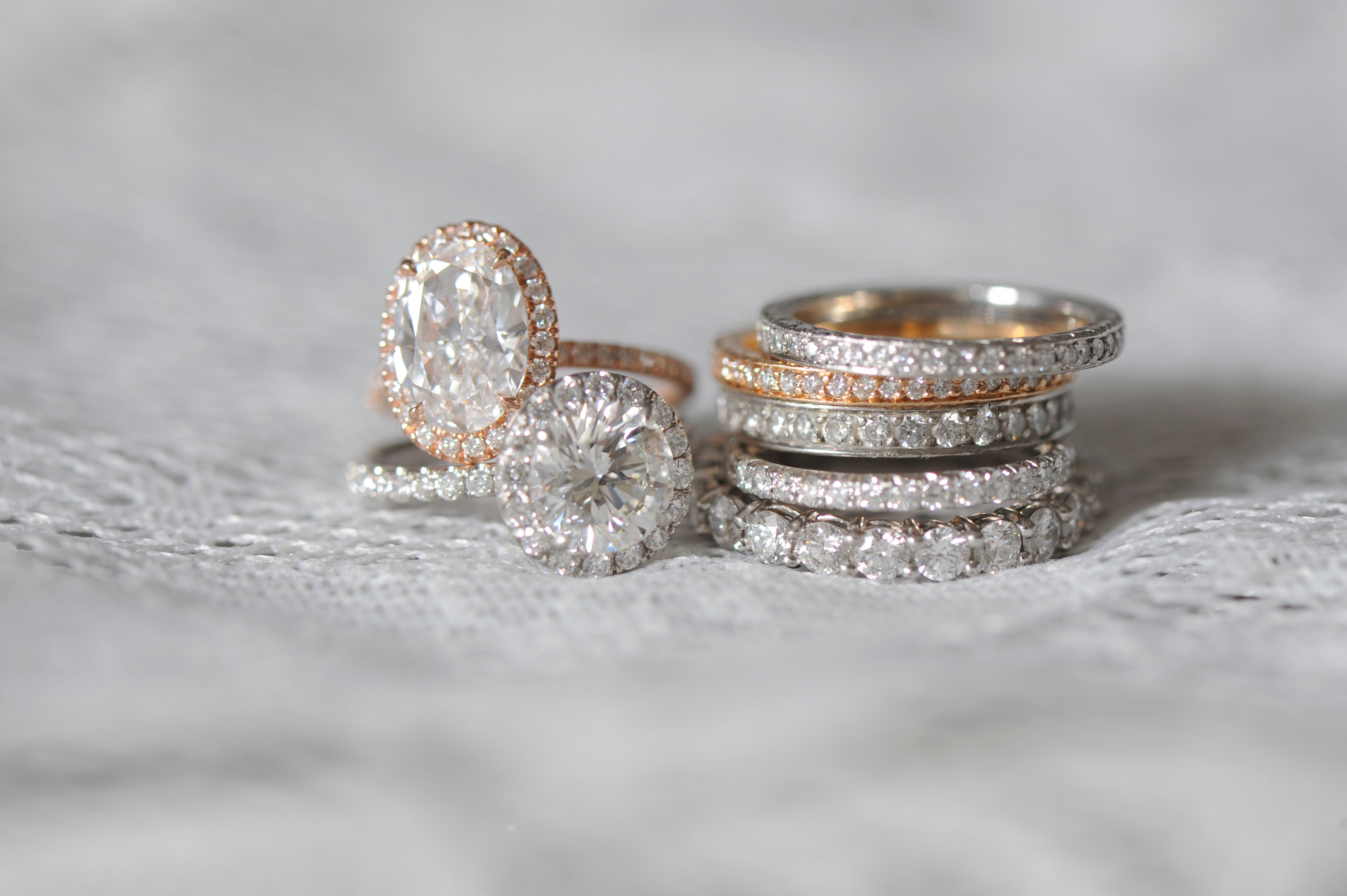Selecting the perfect ring, whether for an engagement, wedding, or a special occasion, is a significant decision that requires careful consideration. One of the primary choices to make is between platinum and gold. Both metals have their unique attributes, advantages, and disadvantages. This comprehensive guide will delve into the specifics of each, helping you make an informed choice that suits your preferences and lifestyle.
Platinum Rings: Unmatched Durability and Elegance
What is Platinum?
Platinum is a precious metal known for its durability, natural white luster, and rarity. It is denser and heavier than gold, making it a popular choice for fine jewelry, especially rings.
Advantages of Platinum Rings
- Durability and Strength: Platinum is one of the strongest and most durable metals used in jewelry. Its density ensures that it can withstand daily wear without losing its shape or structure. This makes it an ideal choice for rings that are worn frequently.
- Hypoallergenic Properties: Platinum is a hypoallergenic metal, making it suitable for individuals with sensitive skin or metal allergies. This attribute ensures that platinum rings are comfortable and safe to wear over long periods.
- Natural White Sheen: Platinum’s natural white color does not fade or tarnish over time. Unlike white gold, which requires rhodium plating to maintain its color, platinum retains its sheen without additional treatments.
- Symbol of Prestige: Due to its rarity and the complexities involved in its extraction and processing, platinum is often seen as a symbol of prestige and luxury. Owning a platinum ring signifies sophistication and exclusivity.
Disadvantages of Platinum Rings
- Cost: Platinum is more expensive than gold due to its rarity and density. The higher cost can be a significant factor for those on a budget.
- Weight: The density of platinum also means that it is heavier than gold. Some individuals may find the weight of a platinum ring less comfortable for everyday wear.
Gold Rings: Timeless Versatility
What is Gold?
Gold is a classic choice for jewelry, renowned for its warm glow and versatility. It is available in various colors, including yellow, white, and rose gold lab made diamonds, each offering distinct aesthetic appeal.
Advantages of Gold Rings
- Variety of Colors: Gold rings come in different colors, each achieved by alloying gold with other metals. Yellow gold is mixed with copper and zinc, white gold with palladium or nickel, and rose gold with copper. This variety allows for a broader range of design possibilities.
- Affordability: While the price of gold fluctuates, it is generally more affordable than platinum. This makes gold a popular choice for those looking to balance quality with cost.
- Lighter Weight: Gold is lighter than platinum, which can make gold rings more comfortable for everyday wear, especially for those who prefer a less substantial feel.
- Ease of Resizing: Gold rings are typically easier to resize than platinum rings. This is an important consideration if you anticipate needing adjustments in the future.
Disadvantages of Gold Rings
- Softness and Wear: Gold, particularly in higher karat forms, is softer and more prone to scratches and dents. Over time, this can affect the appearance of the ring, especially if worn daily.
- Color Maintenance: White gold requires rhodium plating to maintain its white appearance, which can wear off over time and need reapplication. Yellow and rose gold can also tarnish or change color depending on the alloy composition.
Factors to Consider When Choosing Between Platinum and Gold
Lifestyle and Durability Needs
Consider how often you will wear the ring and what activities you will be doing while wearing it. Platinum’s durability makes it ideal for those with an active lifestyle or who use their hands frequently. Gold, while softer, can still be a good choice if properly cared for and if you prefer a lighter ring.
Budget
Budget is a crucial factor. Platinum rings are generally more expensive than gold rings. If cost is a major consideration, gold might be the better option. However, it is essential to weigh the cost against the benefits of durability and hypoallergenic properties.
Skin Sensitivity
For individuals with sensitive skin or metal allergies, platinum is the better choice due to its hypoallergenic properties. Gold alloys, especially those containing nickel, can cause allergic reactions in some people.
Aesthetic Preferences
Your personal style and the desired appearance of the ring play a significant role in the decision. If you prefer a ring with a natural white sheen that does not fade, platinum is ideal. If you enjoy the warmth of yellow or rose gold, or the variety of color options, gold is the way to go.
Symbolism and Sentiment
Consider the symbolic value and sentiment associated with the ring. Platinum’s rarity and prestige can add an extra layer of significance, making it a powerful symbol of a special commitment or milestone. Gold, with its historical and cultural significance, also carries a deep symbolic value.
Conclusion: Making Your Choice
Choosing between a Platinum or Gold ring involves considering various factors, including durability, cost, skin sensitivity, and aesthetic preferences. Both metals have their unique advantages and can beautifully symbolize special moments and commitments. Whether you opt for the unmatched durability of platinum or the timeless versatility of gold, your ring will undoubtedly be a cherished piece of jewelry.

